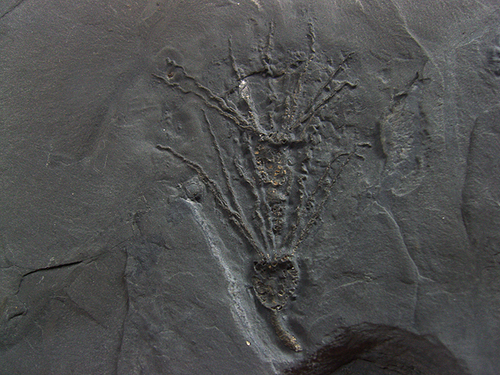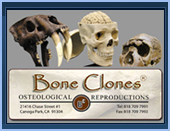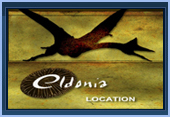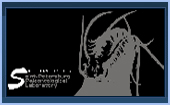화석명 : 돈크라노이드/초기해백합(Dawn Crinoid)
분류: Phylum Echinodermata, Subphylum Blastozoa, Class Eocrinoidea (also called Dawn Crinoid, or Eocrinoid)
학명 : Gogia spiralis
시대 : Middle Cambrian
Fossil Site: Upper Wheeler Formation, Millard County, Utah
Size : 23.5cm * 20cm
The genus Gogia represents one of the most primitive groups of stalked echinoderms, hence the class assignment Eocrinoidea, which roughly means “dawn crinoid”. Echinoderms include groups as diverse as starfish, sea urchins, crinoids, and sand dollars. Gogia differed from true crinoids in that they had pores along the margins separating the plates, and the type of feeding arms they displayed. The species Gogia spiralis derives its name from its tightly spiraled arms and is only one of three Gogia species to have spiraled arms. Gogia had a vase-shaped body or calyx with irregularly positioned plates. It also had a stalk made up of smaller plates that attached to the sea floor, and food-gathering arm-like structures called brachioles. Gogia was a sessile (stationary) suspension feeder gathering food with its arms in calm waters of shallow Cambrian seas. Gogia spiralis usually attached directly to the mud, but on rare occasions attached to brachiopods and trilobite fragments on the sea floor. Gogia were widely distributed in the lower and middle Cambrian formations of western North America, but only a few partial specimens have been found in the Burgess Shale. Gogia occurred at the base of the cystoid radiation, with three distinct cystoid lineages derived from different Gogia species. Gogia lived only during the Cambrian time period, but the cystoids that evolved from them survived until the end of the Devonian.













































 수량을 선택해주세요.
수량을 선택해주세요.





































